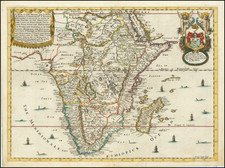Map of Mr. F.C. Selous' Routes in Eastern Mashona Land, 1889, derived from Selous' sketches and bearings, was published for the Proceedings of the Royal Geographical Society in 1890. Meticulously assembled by William Jonathan Turner, F.R.G.S., and printed by Turner & Shawe, it depicts the journey from the River Zambesi to Mt. Hampden in the southwest. Selous' routes are highlighted in red, with topographical elevations provided in English feet.
Frederick Courtney Selous (1851-1917)
Frederick Courteney Selous was a British explorer, officer, professional hunter, and conservationist active in Southeast Africa. His experiences in the wilderness indirectly influenced literary works, particularly Sir Henry Rider Haggard's character, Allan Quatermain. Selous was acquainted with notable figures of his time, including Theodore Roosevelt, Cecil Rhodes, and Frederick Russell Burnham.
At 19, Selous ventured from the Cape of Good Hope to Matabeleland. By early 1872, he secured permission from Lobengula, the King of the Ndebele, to hunt game throughout his territories. From that point until 1890, Selous delved deep into the lesser-known regions between the Transvaal and the Congo Basin. While primarily known for hunting African elephants, he also collected a diverse range of specimens, enriching both museums and private collections. His expeditions significantly enhanced the understanding of the region we recognize today as Zimbabwe. Notably, Selous had a knack for maintaining amicable relations with the local tribes and chiefs, even those who hadn't encountered a white man before, exemplified by his warm relationship with Lobengula.
In 1889, Cecil Rhodes engaged Selous in the British South Africa Company's activities. He guided an expedition to Mashonaland, navigating through 640 km of varied terrain. Later, he was involved in bringing Manica under British influence. Returning to England in 1892, he was acknowledged with the Founder's Medal of the Royal Geographical Society and penned a summary of his journeys in "Twenty Years in Zambesia."









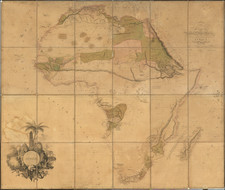
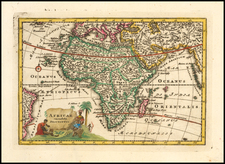
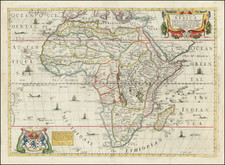
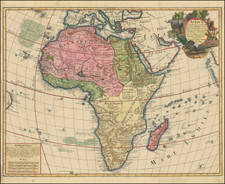
![Affrika třetj djl okrsslku zemského [Czech Language Edition]](https://storage.googleapis.com/raremaps/img/small/93470.jpg)
